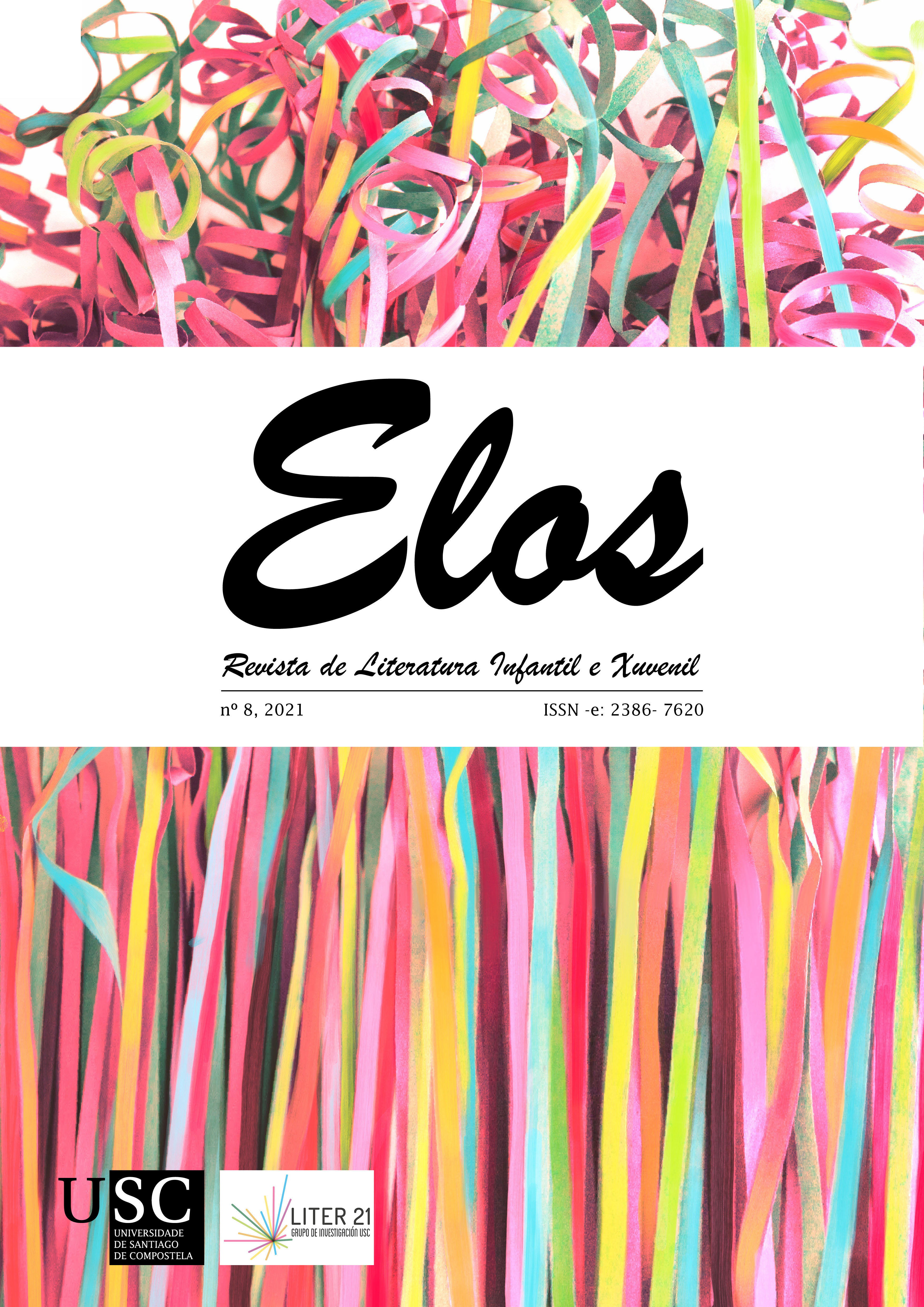Dejen a la niñez en paz: la censura de libros para la infancia con temas LGBTIQ+
Contenido principal del artículo
Resumen
El día 19 de octubre de 2019, Paul Dorr retransmitió en directo en Facebook una acción de protesta donde quemó cuatro libros para la infancia con temas LGTBIQ+, que había conseguido en la biblioteca pública de Orange City, en el estado de Iowa. Algunos de eses libros están presentes con frecuencia en las listas anuales de los diez libros más censurados en las bibliotecas públicas de los EUA, a través de las listas realizadas desde 2001 por la American Library Association, para contextualizar la cuestión de la censura de libros para la infancia con temas LGTBIQ+, destacando la manera en que se volvieron predominantes en estas listas a lo largo de los últimos años. Partiendo de la cuestión clásica del doble destinatario que influye de manera inevitable sobre el subsistema literario de la literatura infantil (Shavit, 2004), se discuten las características que, por una parte, muestran la importancia de la presencia de estos temas en la literatura infantil (Bartholomaeus y Riggs, 2019; Madalena y Ramos, 2021), pero que también la convierten en un campo de batalla ideológico (Stephens, 2018).
Palabras clave:
Detalles del artículo
Referencias
Bartholomaeus, C., e Riggs, D. W. (2019). ‘Girl brain … boy body’: representations of trans characters in children’s picture books. Em R. Pearce, I. Moon, K. Gupta, e D. L. Steinberg (Eds.), The Emergence of Trans: Cultures, Politics and Everyday Lives (pp. 135–148). Routledge.
Brill, S., e Pepper, R. (2008). The transgender child. Cleis Press Inc.
Brugeilles, C., Cromer, I., e Cromer, S. (2002). Male and Female Characters in Illustrated Children’s Books or How children’s. A literature contributes to the construction of gender. Population, 57 (2), 237-267.
Cano Oncala, G., Esteva Antonio, I., e Bergero, T. (2006). Reflexiones psicológicas sobre el proceso transexual mujer a hombre. Em E. Gómez-Gil e I. E. Antonio (Eds.), Ser transexual (pp. 251-267). Glosa.
Chatton, B. (2001). Picture Books for Preschool Children: Exploring Gender Issues with Three- and Four-Year-Olds. Em S. Lehr (Ed.), Beauty, brains and brawn: the construction of gender in children’s literature (pp. 57-66). Heinemann.
Evans, J. (2015). Challenging and controversial picturebooks: creative and critical responses to visual texts. Routledge.
Gavilán, J. (2018). Infancia y transexualidad. Ediciones Mágina.
Gill-Peterson, J. (2018). Histories of the Transgender Child. University of Minnesota Press.
Hamilton, M. C., Anderson, D., Broaddus, M., e Young, K. (2006). Gender stereotyping and under-representation of female characters in 200 popular children’s picture books: A twenty-first century update. Sex Roles, 55 (11–12), 757–765.
Johnston, R. R. (2011). Gender. In M. O. Grenby e K. Reynolds (Eds.), Children’s Literature Studies: A Research Handbook (pp. 151–161). Palgrave Macmillan.
Lehr, S. (2001). The Hidden Curriculum: Are We Teaching Young Girls to Wait for the Prince? Em S. Lehr (Ed.), Beauty, brains and brawn: the construction of gender in children’s literature (pp. 1–20). Heinemann.
Madalena, E. e Ramos, A. M. (2021). Gender Diversity in Picturebooks: Challenges of a Taboo Topic in Portuguese Schools. Em G. Haaland, B. Kümmerling-Meibauer, e Å. M. Ommundsen (Eds.), Exploring Challenging Picturebooks in Education: International Perspectives on Language and Literature Learning (pp. 143–160). Routledge.
McCabe, J., Fairchild, E., Grauerholz, L., Pescosolido, B. A., e Tope, D. (2011). Gender in twentieth-century children’s books: Patterns of disparity in titles and central characters. Gender and Society, 25 (2), 197–226.
Narahara, M. (1998). Gender Bias in Children’s Picture Books: A Look at Teachers’ Choice of Literature. https://files.eric.ed.gov/fulltext/ED419247.pdf
Norton, J. (1999). Transchildren and the Discipline of Children’s Literature. The Lion and the Unicorn, 23 (3), 415–436.
Nunes, A. F. R. (2017). Era uma vez… Estereótipos de Género nos Livros Infantis. ISCTE-IUL.
Paynter, K. C. (2011). Gender Stereotypes and Representation of Female Characters in Children’s Picture Books. Liberty University.
Platero, R. (2014). Trans*exualidades: Acompañamiento, factores de salud y recursos educativos. Bellaterra.
Ramos, A. M., Mourão, S., e Cortez, M. T. (Eds.). (2017). Fractures and disruptions in children’s literature. Cambridge Scholars Publishing.
Reynolds, K. (2007). Radical children’s literature: future visions and aesthetic transformations in juvenile fiction. Palgrave Macmillan.
Rodrigues, P. (2003). Questões de género na infância. Instituto Piaget.
Scott, K. P. (1986). Effects of Sex-Fair Reading Materials on Pupils’ Attitudes, Comprehension, and Interest. American Educational Research Journal, 23 (1), 105-116.
Shavit, Z. (2004). Poética da Literatura para Crianças. Caminho.
Stephens, J. (2018). Picturebooks and Ideology. Em B. Kümmerling-Meibauer (Ed.), The Routledge Companion to Picturebooks (pp. 137–145). Routledge.
Weitzman, L. J., Eifler, D., Hokada, E., e Ross, C. (1972). Sex-Role Socialization in Picture Books for Preschool Children. American Journal of Sociology, 77 (6), 1125-1150.







